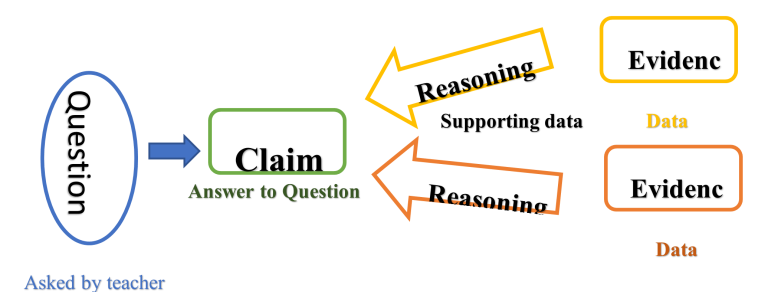Successfully Implement Claims, Evidence, and Reasoning for ELs
All kids are curious, no matter where they are born or what language they speak. Curiosity—the desire to understand and explain how the world works—drives the questions that we ask and the investigations that we conduct. But how do we plan lessons to allow that natural curiosity to run wild in the science classroom when the student’s first language is not English? And how do we create an environment where all students can interact like scientists, where language and content are taught simultaneously?
One answer is by designing science inquiry–based instruction using Claim, Evidence, Reasoning (CER). CER is important because it helps students think through the scientific process. It is the key to argumentation. In the science or STEM classroom, students must make predictions (claims) and be able to support and explain their reasoning behind their predictions (claim) with evidence, because all claims must have supporting evidence, and students should be able to explain the reasoning behind their thoughts. CER is science and literacy combined!
But how do we get English learners (ELs) to argue when language and vocabulary are an issue? In today’s blog, I explain how to use CER for students at various levels of language acquisition so that ALL students can participate in scientific argumentation while simultaneously learning content and feeling like a valuable member of the class.
But first, let us briefly understand the CER Framework and what each component is all about.

CER contains the following components:
- Question: Teacher asks a close-ended question after providing a visual (that can be video, picture, or other media) based on phenomena or that connects with a lab assignment. Vocabulary is introduced during this part as well. The students’ answer to the question initiates the 3-part structure of CER: the Claim, the Evidence, and the Reasoning.
Each proficiency level ability in the charts below was amended from WIDA Can Do Descriptors.
Claim: The students state their opinion or observation about the question based on what the teacher provided as a visual. It is only one sentence; when stating a claim, there is no explanation, reasoning, or evidence at this stage.
Be sure to provide sentence frames or sentence starters, especially for the beginner level.

Evidence: The data used to support the claim. The students collect the data they need to answer the question from the claim. They need to decide how can they collect the data and how can they investigate it. It can be quantitative or qualitative. Should have at a minimum two pieces of evidence, but three pieces of evidence creates a pattern.

Reasoning: It is based on the evidence collected by the students once they have conducted the investigation and have data. (This is why it is between claim and evidence in the diagram below). The explanation is based on a rule, scientific principle, law, or definition that describes why the evidence supports the claim. In other words, how logically does the evidence support the claim?

At the end of any CER activity, students should have the opportunity to interact with their class to share their knowledge and to build meaning. Here is what the teacher should understand in regards to abilities for each language proficiency level:

CER is an excellent framework to offer all students an opportunity to learn how scientists work in real life. Argumentation is a crucial part of the scientific world, but for ELs, the CER framework not only allows them to work like scientists, but it allows them to speak, read, and listen to the new language and content in its truest form. But do note the following before embarking on this in your classroom:
- It is imperative, especially for EL student success, that the teacher models the CER process each time it will be used.
- Each time, the teacher should use gradual release of responsibility, effective instructional strategies for ELs, and effective questioning techniques to ensure and assess that the students are grasping the process of writing CERs.
- Teachers need to model the process to provide the EL student with a visual for how to think and process the information.
Using CER, according to the National Academy of the Sciences, in the science classroom can be particularly beneficial to ELs because as they progress, they will be able to make valuable contributions by sharing their ideas, regardless of social status or linguistic accuracy.
Have you used CER with your ELs? Please share in the comments, below!

About the author
Darlyne de Haan
Dr. Darlyne de Haan, a former forensic scientist and chemist with more than 20 years of experience in STEM, is a recipient and participant of the coveted Fulbright Administrator Program for Fulbright Leaders for Global Schools, a program sponsored by the U.S. Department of State's Bureau of Educational and Cultural Affairs. She is a strong advocate for changing the face of STEM to reflect the population and is fluent in English and advanced in Spanish.